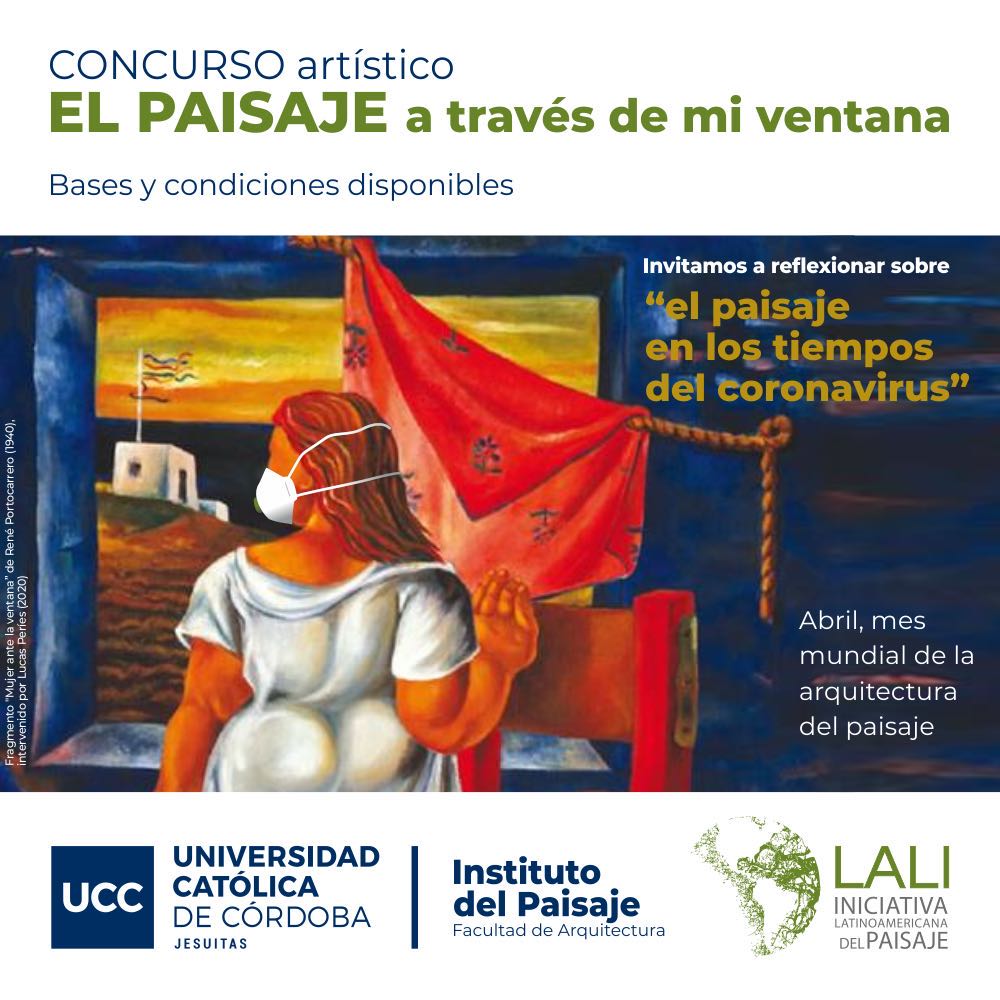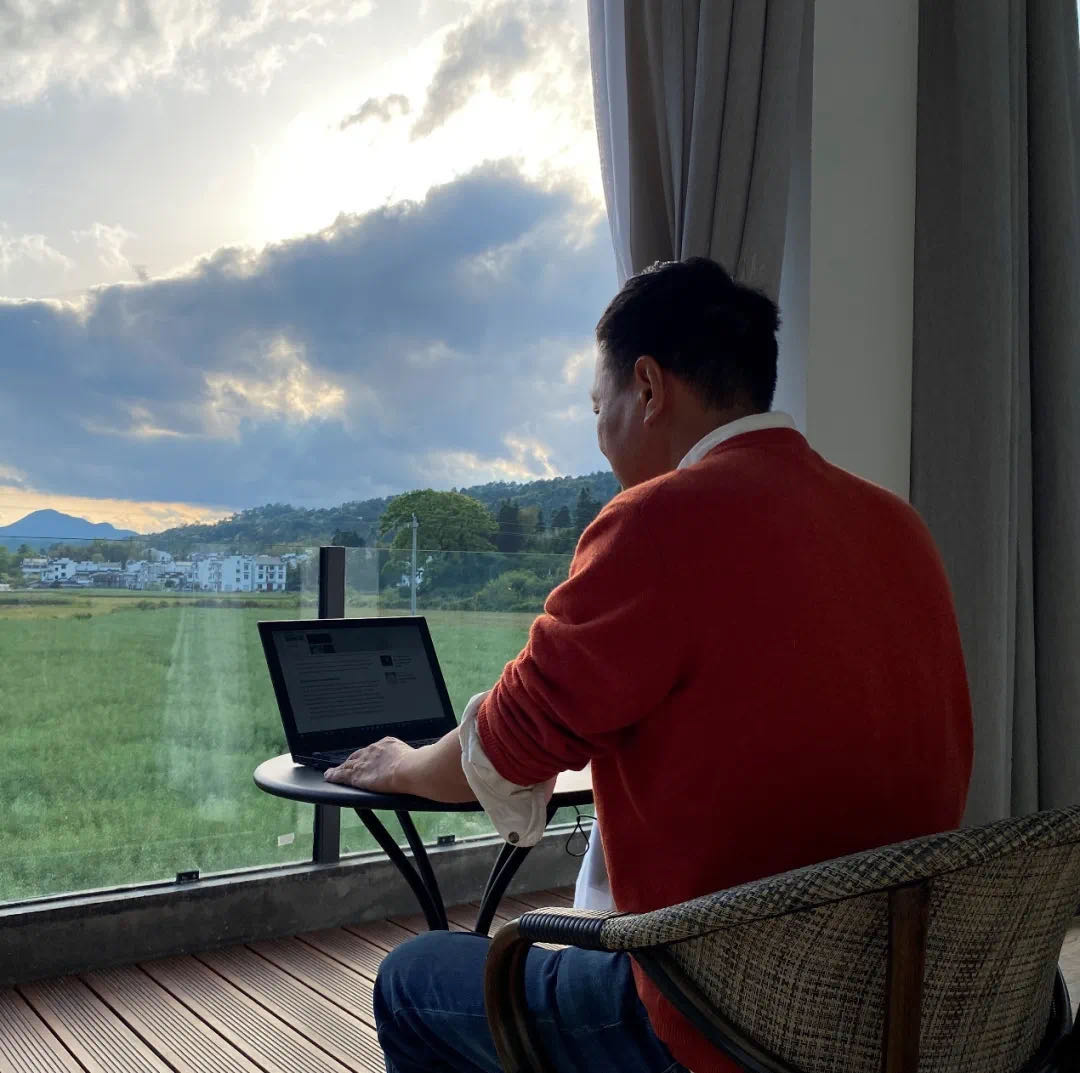我窗外的风景:关于covid-19的思考 The Landscape through my window
俞孔坚 写在“世界景观月World Landscape Architecture Month”
及“我窗外的景观”国际艺术竞赛THE LANDSCAPE THROUGH MY WINDOW artistic competition
来源:http://www.lali-iniciativa.com/kongjian-yu-2/


A seemingly surreal landscape through my window, an ancient village in harmony with nature, is actually a real landscape that has been here for over a thousand years. Being on lockdown in a remote village in Wuyuan, Jiangxi Province, has led me to realize that the ways we have lived in cities bin the past is utter nonsense.
窗外,看似不真实的风景——古老的村庄依偎在自然的怀抱之中,和谐平静——实际上已存在了一千多年。在江西省婺源的一个偏远村庄——赋春巡检司,避疫中的我突然意识到,过去我们在大都市中的生活竟然是一场误会。
We know that the COVID-19 pandemic is not the first of its kind, nor will it be the last. Yet there is much to reflect on this time — more than ever before. To me, the most important realization is about the relationship between nature and humankind:
类似COVID-19的世界疫灾不是第一次,也不会是最后一次。然而,这次比以往任何一次都有更多值得反思的地方。于我而言,最重要的认识是关于人与自然之间的关系:
This pandemic is teaching us just how arrogant we were to ever imagine that we had nature under our control. Nature’s true power is beyond both our senses of perception and our imagination. Scientists tell us that there are more viruses on the planet than stars we see in the sky. This is why we need be humble before nature.
这次世界疫灾告诉我们,企图掌控自然的人类是多么的傲慢自大。大自然的真正力量远远超乎我们的认知和想象。科学家告诉我们,地球上的病毒比我们在天空中看到的星星还要多。这就是为什么在大自然面前,我们要始终保持谦卑。
This pandemic is also teaching us that so many of the deeds of which we’re most proud are, in fact, utter nonsense. The skyscrapers, the grandiose monuments, the huge expanses of cities, and the impenetrable fences and walls that we built to hold back nature have revealed themselves to be cells that actually lock us in.
这次世界疫情也让我们反思,人类引以为傲的许多丰功伟绩,实际上是多么的无知甚至可笑。我们建造的摩天大楼,宏伟的纪念碑蔓延的城市,和用以阻隔自然的坚不可摧的防护墙,却最终都成了禁锢人类自身的监狱。
This pandemic is also teaching us how hard it is to be separated from nature. For millions of residents under lockdown in cities, the ability to be in a natural landscape is suddenly a priceless luxury. On the first day that the Anhui provincial government ended its lockdown, Yellow Mountain — one of China’s most iconic landscapes — was packed with visitors seeking a fresh breath of air in a natural landscape. The next day, the government was forced to close the mountain again because of the fear of a resurgence of COVID-19. More than ever, we are realizing that we cannot afford to lose nature and we cannot bear to be separated from the natural landscape.
疫情期间,我们体会到了与自然分离的痛苦。对于城市中千百万的禁足居民而言,拥有片刻的自然突然变得奢侈起来。中国安徽省政府解除封禁的第一天,黄山——中国最具标志性的自然景观——便挤满了游客,他们在大自然中尽情地呼吸新鲜空气。第二天,由于担心COVID-19复发,政府被迫再次关闭了景区。我们比以往任何时候都更加意识到,人类无法承受失去自然、与自然分离的命运。
This pandemic has put an especially fine point on an abiding challenge for landscape architects: How do we keep a respectful distance from nature in order to protect it, while also maintaining the kind of connection we need for emotional and physical sustenance, and — from a purely self-interested standpoint — to harness and enjoy nature’s life-giving services?
这次世界疫灾给景观设计师提出了一个永恒的考验,让我们重新审视:如何为自然争取更多的空间,同时又能保持人类与自然在情感和身体上所需要的联系,(从纯粹自利的角度)利用并享受自然所提供的生态系统服务?
As I write this in mid-April, COVID-19 has killed more than 150,000 people in every corner of the globe, the vast majority of them our parents’ and grandparents’ generation. My comrade and friend Michael Sorkin, a globally respected urbanist and architect, is just one among them, and his passing brings me deep sorrow. No one knows what the ultimate toll will be, but we all know that the world will never be the same. Let us all think hard about how to make that world a place where we, and our children, and their children, can strike a new balance with nature to honor the memories of our older generations, so many of whom have perished in the recent months.
4月中旬,当我写下这些文字时,COVID-19已经让全球15万多人失去了生命,其中绝大多数是我们父辈和祖辈的人们。我的同志和好友迈克尔·索金(Michael Sorkin),一位享誉全球的城市学家和建筑师,他也是这场灾难的不幸者之一,他的去世让我深感悲痛。没有人知道最终会有多少人失去性命,但是我们都知道世界将不再如夕。让我们共同反思:人类如何与自然和谐共生,以此缅怀在最近几个月中不幸去世的同行先辈们。
(编辑/朱亮亮)

